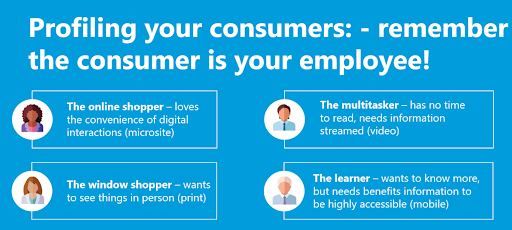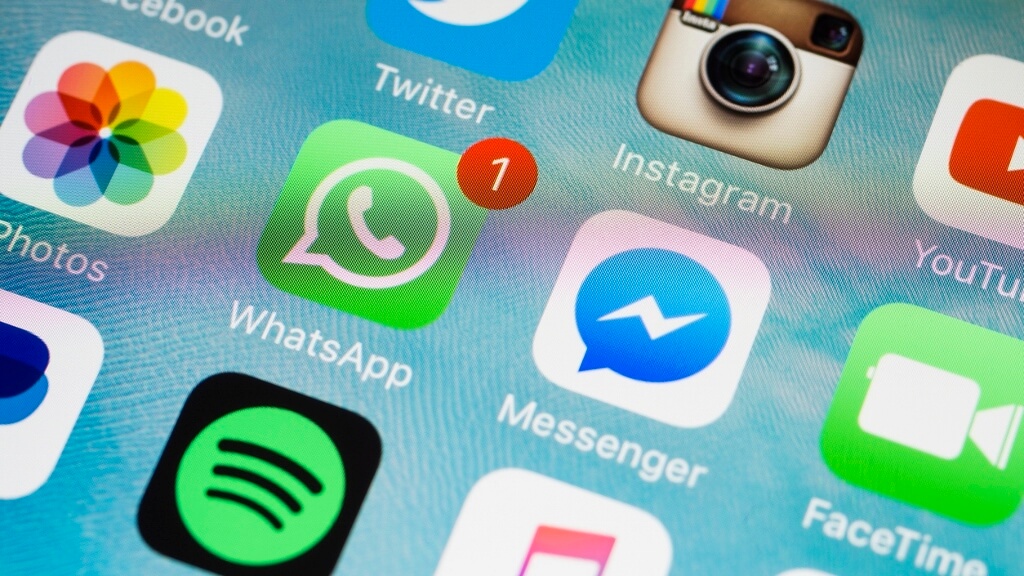Turn open enrollment into a marketing plan

When you think of successful businesses, what comes to mind? Brands like Apple, Facebook, NIke, maybe? These companies are all known for the products they offer, but what really makes them recognizable is the branding and marketing of their products.
What if employers stopped thinking of their benefits as a list of expenses, but rather as a product they sell?
In a recent webinar, Hodges-Mace VP of Communications Emily Dobbins and Communications Manager Lindsay Obrentz explored how HR professionals can borrow a few marketing games to develop an employee enrollment strategy. more impactful benefits. After all, good benefits are the key to employee retention or, in marketing terms, brand loyalty.
1. Define your audience
When rethinking enrollment as a marketing plan, there is a need to stop thinking of employees as employees and instead think of them as an audience. “The whole point of defining your audience is to define what interests them most and talk about it,” Obrentz said. “Marketers love labels. Who gave us yuppies, preppies, hippies, tweens? Having these well-defined market segments is what makes a communication strategy effective in the first place. »

There are four ways marketers can segment their audience that employers can use when reviewing their own workforce:
Geographical: Where are your employees? Do some work remotely or in different states? Obrentz recommended developing a strategy specifically for reaching out to hard-to-reach workers so they aren’t overlooked in your enrollment communications — reminder posters and in-person meetings won’t go over well with your employees at six hour drive.
Demographic: Most workplaces will include employees of different ages, backgrounds, income levels, and more. Trying to talk to each individual based on their unique demographics will be impossible, but Obrentz suggested looking for commonalities that can be used to group them together.
Psychographic: Believe it or not, employees’ benefit choices are influenced by their personal beliefs, and it’s important to recognize the different attitudes and opinions that influence workers.
Behavioral: Known as “purchasing patterns” in the marketing world, you can examine how employees have acted in the past and base sign-up messages on that. Take emergency room visits, for example. “Do you have a ton of people going to the ER when they don’t really need it?” Obrentz applied. “You can build an entire campaign around that.”

HR professionals have access to a lot of data about their employees that can make it easier to segment their audience, but Obrentz also stressed the importance of using surveys or focus groups, just like in marketing. “We are not telepaths,” she said. “Don’t be afraid to ask questions directly to employees. How would you like to be communicated? What is most important to you and your family?
“It also helps you to go up to management and say we’ve heard employees say this is what they want and we’re going to pursue it that way,” she added.
2. Channels and Topics
Once you know who your audience is, you can figure out the best methods to reach them. Creating a benefits guide for employees will offer all the information they want in one place, but as anyone who works with benefits knows, very few employees will actually read all of this information. “They’re not for everyone,” Dobbins said. “That’s why we stress the importance of knowing your audience. It’s more a matter of personal preference.
Product buyers aren’t just going to go to the store and pull something new off the shelf. They have to look for it, that is to say, they have to know a little about it beforehand, and they have to be curious to know more.
How does this translate to employee benefits enrollment? “When you’re developing a campaign, it’s important to understand what feeling you want the pieces to create,” Dobbins said. “First, let’s create awareness for the announcement of the upcoming registration – a postcard, an initial mailing of e-mails.
“So you want to create interest in employees,” she continued. “It might be a really good time to customize a room. Then create a want or need by wanting to sign up for the benefit – how the plans will help them save money.
These pieces of communication come in a variety of forms, including posters, emails, texts, and meetings, to name a few. Widening channels helps get your message out there, but Obrentz also warned that the message won’t be the same for everyone. “If you have digital means of communication that aren’t as robust – text messaging, for example – you won’t send long communications, but you can tie them into email campaigns: ‘Be there. on the lookout for…””
3. Design your message
Once the audience and strategy are set, it’s time to design the actual registration message, which should be a fun experience,” Obrentz said. “Let’s take a cue from this marketing playbook and don’t be afraid to let our benefits brand show a little personality and be a little more human.
Dobbins and Obertz offered the following advice:
- Write out plans to be more approachable, down to earth, and friendly.
- Use fewer words and more visuals, such as infographics.
- People love chips.
- If a sentence or paragraph seems intimidating to you, it is. Choose simpler words and break them down.
- Instead of creating several different communications, break down and repackage existing ones, taking calls from an email, for example.
- Step outside your own team or department and get fresh eyes to make sure your message is clear.
- Use humor, be frank, be creative.
Read more:



